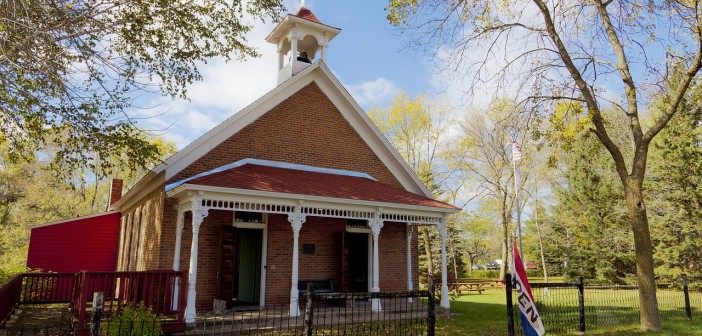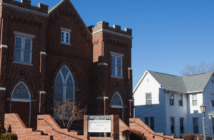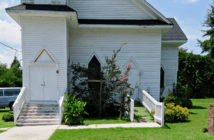My mother attended a one room schoolhouse for all but the last two years of her public education. As a Baby Boomer, I grew up riding the wave of school growth and consolidation and the several accommodations that went with the territory: school buses, area rather than local sports, and, above all, specialization in curriculum with division of the student population. The churches I attended as a teenager and young adult emulated the best practices of the public school system: dedicated spaces, quality and colorful curriculum supported with the latest innovations in audio-video equipment, and credentialed experts to model and train teachers.
The one room schoolhouse model of Christian formation and education can capitalize on the energy of the intergenerational experience with gentle regard for real differences in cognitive development and literacy.
If this were the only script for doing Christian education and formation in a community of faith, small churches would seem to have been left behind — again. It’s the same familiar story: the needs are too great, the resources are too small. But those who are familiar with small churches know otherwise. The biblical portrait of transmitting the faith from one generation to the next in the context of everyday life continues to thrive in small congregations. The best teaching begins in the character of the teacher (put these words of mine in your heart and soul), capitalizes on teachable moments (when your children ask), and is achieved regardless of setting (when you are at home and when you are away, when you lie down and when you rise). (Deut 6:20-21; 11:18-20).
This is good news for small churches struggling with self-worth but also for the many formerly larger congregations today faced with the upkeep of empty Christian Education buildings, the loss of Sunday School as a primary port of entry (see Mission as the Emerging Entry Point for New People, Leading Ideas, April 6, 2011), and the need to consolidate classes or even grade levels. There is something to be said for the one room schoolhouse model of Christian formation and education, a model that capitalizes on the energy of the intergenerational experience with gentle regard for real differences in cognitive development and literacy.
There are one room schoolhouse examples of Christian education and formation that look like the last desperate efforts of a dying institution. There are others that flourish. The difference seems to be in the element of intentionality. Someone has to care enough to carry the vision of a dynamic community of learners across age and skill levels, together developing faith foundations. Outside help is available, even a curriculum specifically targeting the one room schoolhouse model (see “One Room Sunday School” at www.Cokesbury.com), but someone has to take the lead in that wonderful small church alchemy of turning necessity into opportunity.
Related Resources:







